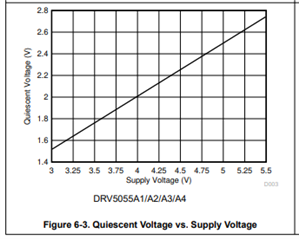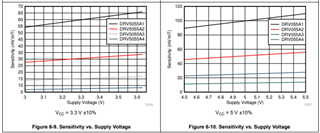Linear Hall-Effect sensors such as DRV5055 are are often referred to Ratiometric sensors. These devices offer a useful advantage in that the output of the device will scales proportionately with Vcc. For a control system monitoring the output voltage of a sensor, it must do so against a known reference voltage.
Consider the scenario shown below:

Let us suppose first that the Hall-Effect Sensor shown here has a wide Vcc voltage range with a fixed output range of 2V regardless of the Vcc voltage. In this case, Vref for the ADC would ideally be set as close to the maximum output voltage of the Hall-effect sensor to provide the greatest resolution. Due to process, temperature, and voltage related variations, this reference voltage may be difficult to target. Instead, it would be easier to use a fixed reference already present in the system. Vcc makes a easy candidate as it is readily available and known to be greater than the output voltage of the sensor.

The challenge here is that Vcc is often not an ideal fixed voltage. A new error will be introduced whenever there is supply noise or as charge is depleted in battery powered systems. Even if the Hall-effect sensor is continuously operating within an acceptable supply voltage and a static input field, whenever the reference voltage of the ADC shifts, then the final resulting conversion output code will change. To the microcontroller reading the output of the ADC, code changes indicate that the magnet used with this sensor has changed position. Erroneous changes to the position data in a control system represent a significant safety and reliability concern.
Instead, a ratiometric Hall-effect sensor will adjust the output range of the device with respect to the incoming Vcc voltage. In this type of device, the ratio of the output to the Vcc supply remains constant with a fixed magnetic field. Please note the following plots captured from the DRV5055 datasheet.


The benefit here is that regardless of supply noise or battery droop, the ADC should receive an input that has a constant ratio respective to the Vcc reference voltage. The Linear magnetic sensing range (BL) is therefore a constant value that represents the maximum input field for any supply voltage that will result in a linear output response for the sensor. As long as the designer keeps the incoming magnetic flux density below BL, the system will provide consistent position information. Additionally, the full scale output range of the sensor will track the full scale input range of the ADC. This will maintain the best overall sensing resolution for the system.
Please consider TI's portfolio of ratiometric sensors available at ti.com

